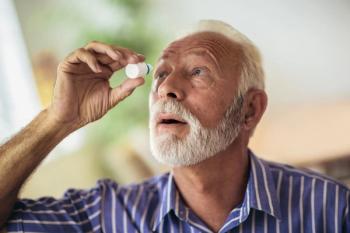
Moxifloxacin shows prophylactic effectiveness
In a quantitative determination of the prophylactic effectiveness of two commercially available ocular fluoroquinolones within the anterior chamber of rabbit eyes, moxifloxacin ophthalmic solution 0.5% demonstrated significantly greater bacterial killing than besifloxacin ophthalmic suspension 0.6%.
Jackson, MS-In a quantitative determination of the prophylactic effectiveness of two commercially available ocular fluoroquinolones within the anterior chamber of rabbit eyes, moxifloxacin ophthalmic solution 0.5% (Vigamox, Alcon Laboratories) demonstrated significantly greater bacterial killing than besifloxacin ophthalmic suspension 0.6% (Besivance, Bausch + Lomb).
This superiority was demonstrated when the drugs were applied either 30 or 60 minutes before infection in this model of Staphylococcus aureus endophthalmitis.
Richard O'Callaghan, PhD, professor and chairman, Department of Microbiology, University of Mississippi Medical Center, Jackson, recently discussed the findings. Charles L. Balzli, BS, MS, a graduate assistant, gave a presentation on the study at the 2009 annual meeting of the Ocular Microbiology and Immunology Group in San Francisco.
The team of researchers conducted two separate experiments comparing the therapeutic penetration of the antibiotics in the anterior chamber. The first experiment involved a drug-susceptible strain (MSSA) and the second a methicillin-resistant strain (MRSA). Of note, they used a unique MSSA strain of S aureus, UMRC1, that grows well in the anterior chamber.
According to Dr. O'Callaghan, some published studies have measured antibiotic action on bacteria injected into the rabbit anterior chamber with a strain that was being killed by the rabbits' host defenses, but this is not a good model.
"Using the strain able to survive and grow in the anterior chamber, we were able for the first time really to measure how well an antibiotic would work in the anterior chamber," he said.
To measure the antibiotic effectiveness in the anterior chamber, a single drop (45 µl) of either besifloxacin or moxifloxacin was topically applied to the rabbit eyes (n ≥ 10 per group) in the active treatment groups 30 minutes prior to infection with MSSA. A group of untreated eyes served as the control. Following a 30-minute period of antibiotic activity, the animals were killed and the aqueous humor was removed for culturing.
The findings demonstrated that the amount of bacteria in the aqueous humor was very similar in the untreated eyes and those treated with besifloxacin (p = 0.2080), while it was significantly lower in the moxifloxacin-treated eyes (p < 0.0001). The levels of bacteria were 5.22 ± 0.11 logs CFU/ml in the untreated eyes, 4.79 ± 0.31 logs CFU/ml in the besifloxacin-treated eyes, and 2.17 ± 0.26 logs CFU/ml in the moxifloxacin-treated eyes.
Newsletter
Want more insights like this? Subscribe to Optometry Times and get clinical pearls and practice tips delivered straight to your inbox.
















































.png)


